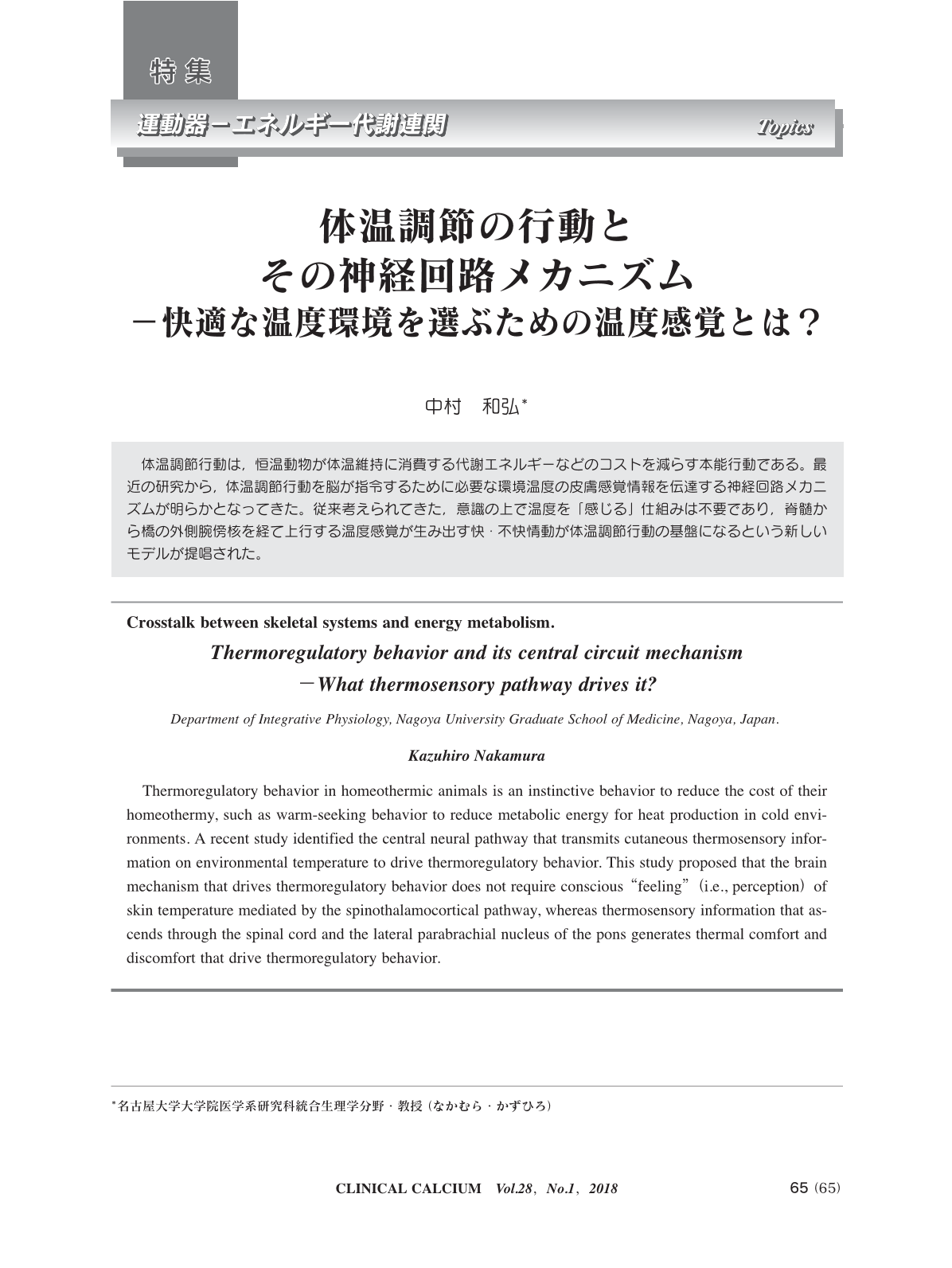Japanese
English
- 有料閲覧
- Abstract 文献概要
- 1ページ目 Look Inside
- 参考文献 Reference
体温調節行動は,恒温動物が体温維持に消費する代謝エネルギーなどのコストを減らす本能行動である。最近の研究から,体温調節行動を脳が指令するために必要な環境温度の皮膚感覚情報を伝達する神経回路メカニズムが明らかとなってきた。従来考えられてきた,意識の上で温度を「感じる」仕組みは不要であり,脊髄から橋の外側腕傍核を経て上行する温度感覚が生み出す快・不快情動が体温調節行動の基盤になるという新しいモデルが提唱された。
Thermoregulatory behavior in homeothermic animals is an instinctive behavior to reduce the cost of their homeothermy, such as warm-seeking behavior to reduce metabolic energy for heat production in cold environments. A recent study identified the central neural pathway that transmits cutaneous thermosensory information on environmental temperature to drive thermoregulatory behavior. This study proposed that the brain mechanism that drives thermoregulatory behavior does not require conscious“feeling”(i.e., perception)of skin temperature mediated by the spinothalamocortical pathway, whereas thermosensory information that ascends through the spinal cord and the lateral parabrachial nucleus of the pons generates thermal comfort and discomfort that drive thermoregulatory behavior.



